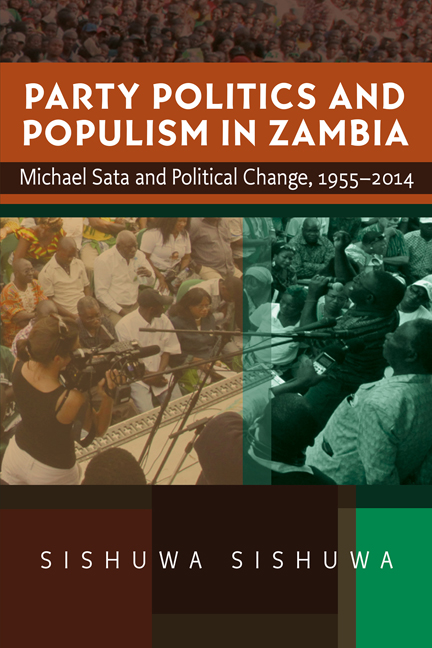Book contents
- Frontmatter
- Dedication
- Contents
- List of illustrations
- Preface
- List of abbreviations
- Map
- Introduction
- 1 Becoming Bemba and a ‘Man of Action’
- 2 Mobilising Urbanites in the One-party State
- 3 Constructing a Power Base in a Dominant Ruling Party
- 4 Building an Alternative Political Force
- 5 Winning the Prize
- Conclusion
- Bibliography
- Index
4 - Building an Alternative Political Force
Published online by Cambridge University Press: 09 May 2024
- Frontmatter
- Dedication
- Contents
- List of illustrations
- Preface
- List of abbreviations
- Map
- Introduction
- 1 Becoming Bemba and a ‘Man of Action’
- 2 Mobilising Urbanites in the One-party State
- 3 Constructing a Power Base in a Dominant Ruling Party
- 4 Building an Alternative Political Force
- 5 Winning the Prize
- Conclusion
- Bibliography
- Index
Summary
BETWEEN 2001 and 2011, the governing Movement for Multiparty Democracy (MMD), under the party and national presidencies of Levy Mwanawasa (2002–2008) and Rupiah Banda (2009–2011), and the opposition Patriotic Front (PF) led by Michael Sata dominated Zambian politics. Mwanawasa was sworn in as president on 2 January 2002 after a narrow win against Anderson Mazoka of the opposition United Party for National Development (UPND). He polled 28.69 per cent of the total vote, defeating Mazoka, who obtained 27.76 per cent, and nine other presidential candidates, including Sata who gained only 3 per cent. Of the total 150 seats in parliament, the MMD won 69, followed by the UPND (49), United National Independence Party (UNIP) (13), Forum for Democracy and Development (FDD) (12), and Heritage Party (HP) (4). Like Ben Mwila's Zambia Republican Party (ZRP), Sata's PF obtained only one seat. This tally is striking since, five years later in the 2006 general elections, Sata only lost to Mwanawasa, who polled 42.98 per cent, by a 13.61 per cent margin. The PF captured forty-three seats in parliament and rose to become the largest parliamentary opposition, dislodging the UPND.
After President Mwanawasa died in office, a presidential by-election was held in October 2008, and despite having insufficient time and financial resources to mount a credible and effective campaign, Sata lost narrowly by 2 per cent to the MMD candidate, Banda, who gained 40 per cent of the total vote. In September 2011, during the country's general and presidential elections, Sata, making a fourth try for the presidency, secured the seat with 42.24 per cent of the total ballot, defeating the incumbent Banda, who got 35.63 per cent. In this election, Sata's PF did strikingly well, winning sixty seats in parliament, the most of any rival political party. Although parties do tend to be younger in Africa than in many other parts of the world, the PF's rise from 3 to 42 per cent of the popular vote over a ten-year-period is unusual. It is this remarkable rise of an opposition party and a leader's efforts to build it that I explore in this and the next chapter. The present chapter examines Sata's rise from 2001 to 2006. The subsequent period, 2006 to 2011, is covered in the following chapter.
- Type
- Chapter
- Information
- Party Politics and Populism in ZambiaMichael Sata and Political Change, 1955 - 2014, pp. 135 - 172Publisher: Boydell & BrewerPrint publication year: 2024

